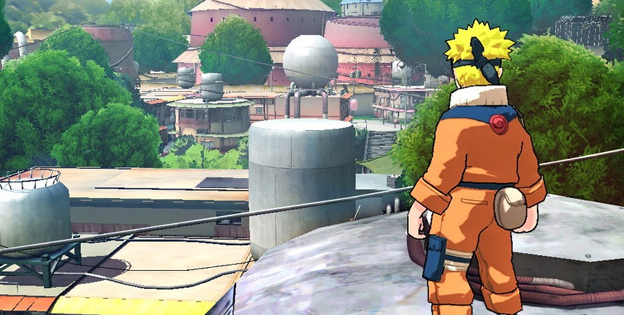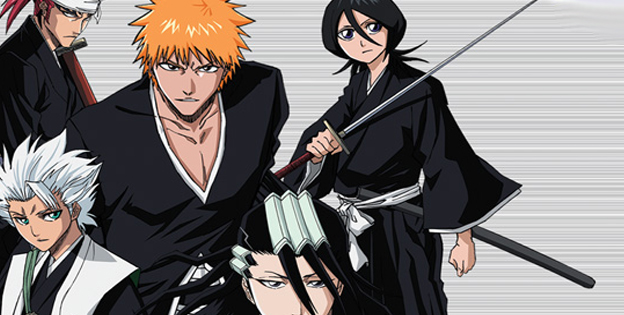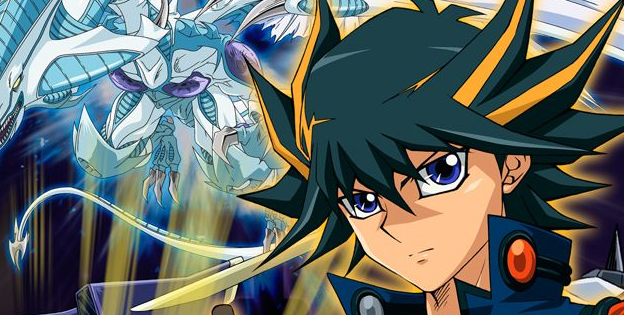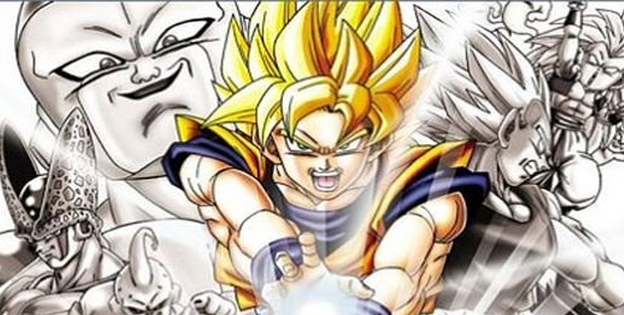Anime-based video games don't exactly have the best reputation. For decades now, players have had to slog through a seemingly endless stream of mediocre anime and manga titles that often serve as disservices to their typically solid animated series. Every once in a while, though, a rare diamond in the big-haired rough comes along to restore our faith in the genre and, in the process, reminding us of one the many reasons that we love Japan as much as we do.
To recognize this disparity, we've decided to compile—in no particular order—some of the greatest highs and most dishonorable lows that anime games have to offer. Please note that we've only chosen games based on pre-existing anime or manga, so kindly stifle your outrage when you don't see any Pokémon or Valkyria Chronicles titles—which only spawned anime after the games themselves were released—on the list. Also, no Hentai. Sorry, fellas.
The Best
Dragon Ball Z: Budokai 3 (PlayStation 2)
There is perhaps no franchise more responsible for anime's massive popularity over the years than Akira Toriyama's Dragon Ball series. With over 350 million copies of the manga sold worldwide, a handful of hit TV anime shows, and even a (regrettable) live-action movie adaptation to its name, it's no wonder that so many people across the globe instantly associate the word "anime" with Dragon Ball.
It makes sense then, that Goku, Vegeta, and company have seen no shortage of video game tie-ins over the course of their days. While the majority of the many DB titles have ranged from mediocre to horrid (more on that later), there have been a few moments of greatness, chief among them the third installment in the popular Budokai fighting game series.
While not anywhere near as technical as fighters like Street Fighter or Tekken, 2004's Budokai 3 is fast-paced, stylish, and just a hell of a lot of fun. With over 40 playable characters spanning the entirety of the anime's lifespan, a heaping of game modes, and improved combat mechanics, Budokai 3 is more than just fan service; it's a damn good fighter in its own right.

Naruto: Rise of a Ninja (Xbox 360)
If we're counting Japan-only releases, there's almost too many Naruto-based video games to count. Like most anime games, most of those aren't even worth mentioning, so it wasn't until Ubisoft Montreal took the reins for this 2008 Xbox 360 exclusive that Naruto truly earned his spot at the good games table.
Blending the RPG, fighting game, and platformer genres together, Rise of a Ninja is surprisingly deep and thoroughly enjoyable. It's gorgeous too, with a cel-shaded style that makes you feel like you're actually watching the Naruto TV show while you're playing. Add to that an excellent story mode which faithfully retells the anime's opening arcs, a solid multiplayer component, and an easy-to-learn but difficult-to-master control scheme, and you have yourself one of the best anime games on the market.
Tatsunoko vs. Capcom: Ultimate All-Stars (Arcade, Wii)
We know, we know—this isn't purely an anime game, but it's close enough, and quite frankly it's just too good not to include here. Yes, this 2008 crossover brawler features such familiar Capcom faces as Ryu, Morrigan, and Viewtiful Joe, but characters such as Tekkaman, Polymar, and Gold Lightan—from the Yoshida brothers' famed animation company Tatsunoko Production—are equally essential to making this title as excellent as it is. Accessible to newcomers, yet rewarding to those who'd like to pick at its technical side, Tatsunoko vs. Capcom is just about a must-buy for any Wii-owning fighting game fan.
Astro Boy: Omega Factor (Game Boy Advance)
Astro Boy is the granddaddy of all anime. First published as a manga in the early 1950's by the "God of Manga" himself, Osamu Tezuka, Astro Boy's success went a long way towards legitimizing the art form, helping to lay the foundation for the behemoth it has become today.
And while the half-nude boy robot has had a couple of stinkers in the video game space, 2004's Astro Boy: Omega Factor for the GBA is still recognized to this day as one of the best action games ever made for Nintendo's handheld. Charming enough for fans of all ages to pick up and play, Omega Factor boasted stunning visuals for its time, and offers a satisfying challenge, an engaging plot, and satisfying, old school beat-em-up gameplay. Most will agree: Omega Factor is worthy of the prestigious Astro Boy name.

Bleach: Dark Souls (Nintendo DS)
This 2008 handheld fighter (2007 in Japan) expands and improves upon its wonderful predecessor, Bleach: The Blade of Fate. The original Dark Souls is endlessly playable, and features, among other upgrades, 44 separate characters, a couple new game modes, added combos and move sets, and an amended Wi-fi battle mode that makes beating up your friends online easier than ever. Sure, it doesn't change all that much from The Blade of Fate, but then again, it doesn't really need to. Ichigo Kurosaki and company struck gold for the second straight time with this one.
The Worst
Mobile Suit Gundam: Crossfire (PlayStation 3)
We begin our shift to those less fortunate anime games with one of the more heinous launch titles in recent memory.
2006's Crossfire does little to showcase the immense power of the PlayStation 3, with last-gen graphics and sloppy frame rate issues that would rightfully irk anyone who had just dropped $500 on a new piece of hardware. Gundam games are traditionally subpar, but the slow, bland, and difficult-to-control mech action found here make Crossfire just plain aggravating to play. Even the most hardcore of MSG fans would be hard-pressed to find a reason to justify this title's worth.

Yu-Gi-Oh! 5D's Decade Duels (Xbox LIVE Arcade)
Look, not all Yu-Gi-Oh! games are all that bad—most are just mediocre, and I even recall enjoying Yu-Gi-Oh! The Eternal Duelist Soul for the GBA way back when. But honestly, there are just too damn many of them by this point. Sometimes you got to say enough is enough to the onslaught of inadequacy.
That's just what we're doing with 2010's Yu-Gi-Oh! 5D's Decade Duels, which offers virtually nothing new to the already tired card battler franchise. An overly simplified presentation, frustratingly imbalanced enemy A.I., and thousands of missing cards make 5D's Decade Duels the least appealing of the series, so much so that it's not even available to purchase on XBLA anymore.
If nothing else, I think we can all agree that it has one of the weirdest names ever for a video game, anime-based or not.
Zatch Bell! Mamodo Fury (PlayStation 2, GameCube)
As you may have noticed by this point in the list, anime and manga tend to translate to the fighting game genre much more than any other. And unlike the aforementioned Budokai 3 or Tatsunoko vs. Capcom, many of those fighters tend to be more knocked-out than knockout.
Case in point: 2006's Zatch Bell! Mamodo Fury, which only seeks to put bits of the beloved Zatch Bell! manga in video game form and then do nothing with them. Generic in both design and graphical quality, Mamodo Fury also suffers from a poor camera, repetitive controls, and a nagging sense of never knowing what the hell it's exactly telling you to do.
Given the often manic nature of the Zatch Bell! anime, Mamodo Fury has no business being this boring.
Eureka Seven vol. 2: The New Vision (PlayStation 2)
Bandai's sequel to the subpar Eureka Seven vol. 1: The New Wave is an especially disappointing entry on this list, since, to some people, it actually tells a decent story. Taking place immediately before the events of the Eureka Seven anime, The New Vision suffers from the simple problem of forgetting to put an acceptable action game alongside its halfway decent plot.
Yes, hardcore fans of the anime will buy this game and probably be cool with it, but for the rest of us, The New Vision is painful to sit through. Even if you do find the tale of mech pilot Sumner Sturgeon and the soul-sucking LFO robots—and you can probably see by the beginning of this sentence how plenty of people would still find the game corny—there's just no excuse for The New Vision's brainless mech combat, pointless "air boarding" sequences, and overly drawn-out cutscenes.
As an interactive anime, The New Vision is serviceable enough for some. But as a video game, it's a wreck.

Dragon Ball Z: Ultimate Battle 22 (PlayStation)
Remember what I said way back at the beginning of our little journey about most DBZ games ranging from "mediocre to horrid"? Yeah, this is one of those horrid ones. Dragon Ball Z: Ultimate Battle 22 is, to give it to you straight, one of the worst fighting games ever released.
The story behind its 2003 U.S. release—yes, it was released for the PS1 in 2003, two years into the PS2's lifecycle—tells you all you need to know about Ultimate Battle 22: it was a cheap cash-in, nothing more, nothing less. 22 originally launched in Japan in 1995, and was terrible, with the graphical and sonic qualities of a Super Nintendo title, a pathetically low number of playable characters, and simplistic combat of the most uninspired kind.
Yet, a full eight years later, publisher Infogrames decided to dust off the title and ship it over to the States without making any changes whatsoever to it. Even the voice acting, what little of it there is, was still in its original Japanese when the fighting game stumbled its way overseas. So, for Americans, Ultimate Battle 22 is literally an outdated game that couldn't cut it in 1995, and still made you embarrassed to play it a decade later.
If nothing else, let it serve as a lesson to all anime fans: if you'd like to see your favorite characters in a video game one day, please hold the companies that make those games to at least a reasonable standard before you blindly give them your money. My guess is that we'll all be better off for doing so in the end.
By
Jeff Dunn
Jeff Dunn

No comments:
Post a Comment